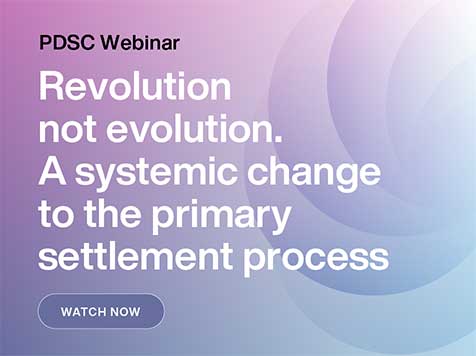Primary Delayed Settlement Compensation
Improving efficiency, particularly around settlement times, in the primary and secondary loan markets continues to be one of the key goals of the LMA and its members.
Working with members of the Board from both the buy and sell side, the Board have approved a recommended timeline for settlement of primary leveraged loan syndication, incorporating fault based delayed settlement compensation.
The timeline seeks to address the delays occurring by providing a set of recommended timings for key steps in the syndication process and where the recommended settlement time is not met, the introduction of a fault based delayed settlement compensation mechanism.
Click here to access the Guidelines. You will need to login with your username and password to download them. To create a username and password, click here. If you have forgotten your password, click here.
The guidance looks to balance the competing interests of all stakeholders in the syndication process. The following key points should be noted:
- the timeline is a statement of recommended best practice with a target of 10 business days, meaning that it requires settlement - namely the potential lender/buyer becoming lender of record - within 10 business days of the later of allocation or funding date;
- the compensation mechanism only applies to syndications where the facility agent, security agent, and underwriter are all part of the same group.
The LMA will keep these guidelines under review to ensure operational effectiveness, market impact, consistency with best practices, and fulfilment of the objectives of promoting greater efficiency and reduced settlement times.
If appropriate and applicable, the LMA will look to extend to other areas of the loan market at a later stage.
The LMA will look to track certain key metrics and maintain the existence of the Board Working Group to look at the utilization and impact of the guidance.
FAQs
Why has the LMA produced these guidelines?
Improving settlement times in both the primary and secondary markets is a core goal of the LMA and the production of these guidelines should assist market practitioners address an area where efficiency can be improved.
How were the guidelines formulated?
A board level working party (w/p) was constituted involving eight board members, four each from the buy and sell side. The working party expanded to include the operations and other technical experts from these institutions to get into the processes and find an agreed methodology for the payment of DC. Clifford Chance provided drafting and legal support.
Are the guidelines legally binding?
Not unless the parties wish to make them so.
Can the guidelines and timeframe be adapted?
Yes, the guidelines are a starting point for the parties to work towards an agreed process.
Why do the guidelines not apply to transactions where the arranger/seller and agent are not in the same group?
As a starting point it was agreed that only where performance responsibility was held by a party could they be expected to be responsible for DC. However, it is the intention of the w/p to try and work through this issue, so that a greater share of transactions and the market are covered.
Will the guidelines be subject to review and incorporate changes as operational feedback is received?
Yes, this is an important starting point for a process which will evolve over time. The w/p will reconvene to assess feedback.
Why is there a distinction between Allocation date and Funding date? Would it not be easier/simpler to keep this as allocation date only? What is the purpose of the two and why do they have different trigger dates?
The timeline looks to the later of Allocation date (AD) and Funding Date (FD). This will capture the eventuality of a primary transaction that has not been funded beyond AD plus 10. Additionally, it will provide additional time between allocation and funding to get all the necessary documentation (including KYC) in place and in good order. Often new primary lenders will not be brought into the deal until funded and the funding date is also key here as it's the date in which the margin is payable by the borrower. The dates also differ to accommodate those transactions that are already funded at allocation so this runs from AD to AD+10 and will be considered the latter. Funding (if not already funded) may occur sometime in the future.
Is it assumed that if the arranger/seller is already known to the lender/buyer that no KYC documentation pack is required and by not sending over this, it does not constitute a default. The onus is therefore on the lender/buyer to request such documents after the identification of the arranger/seller. Does the same apply to the administration form and should it only be sent upon request?
No assumption can be made and therefore there should be clear communication between parties regarding the need for documentation.
Where lenders/buyers provide allocations to the arranger/seller by AD+1. Who has the responsibility to notify the facility agent? Would this be the arranger/seller?
In the absence of any clear instructions or arrangements then, yes. Buyer/lender can choose to communicate directly if agent is known to them, but there needs to be clear agreement or arrangement.
Is it correct to assume that where possible borrower KYC documents are to be sent to the lender/buyer prior to the allocation and AD+1 represents the latest date in which KYC documents should be sent, notwithstanding any additional documents the lender/buyer should require post receipt of the KYC pack?
The responsible party needs to send over the borrower KYC pack as soon as practicable but no later than AD+1 and to be focused on sending over any additional requests after this date, within reason.
